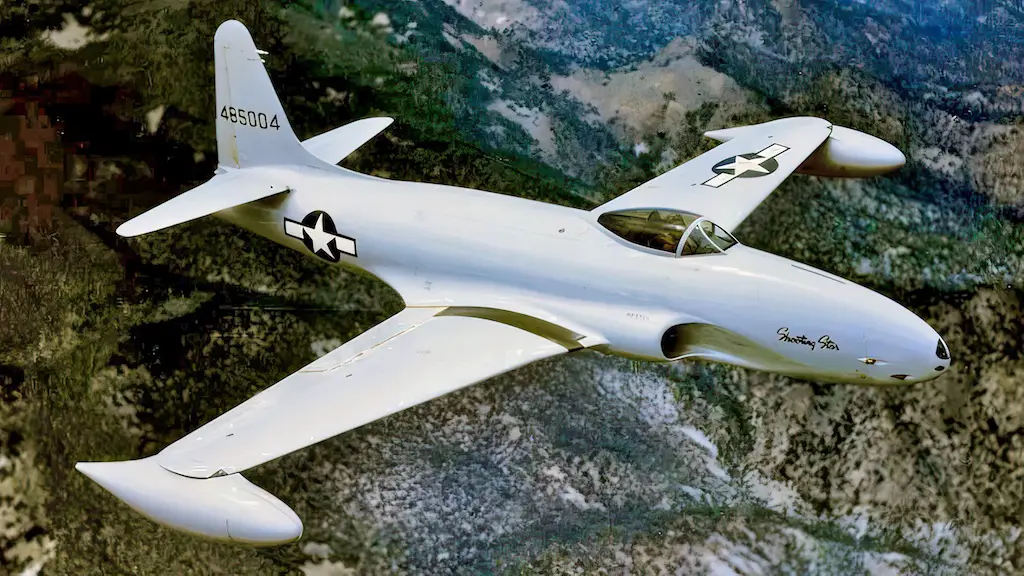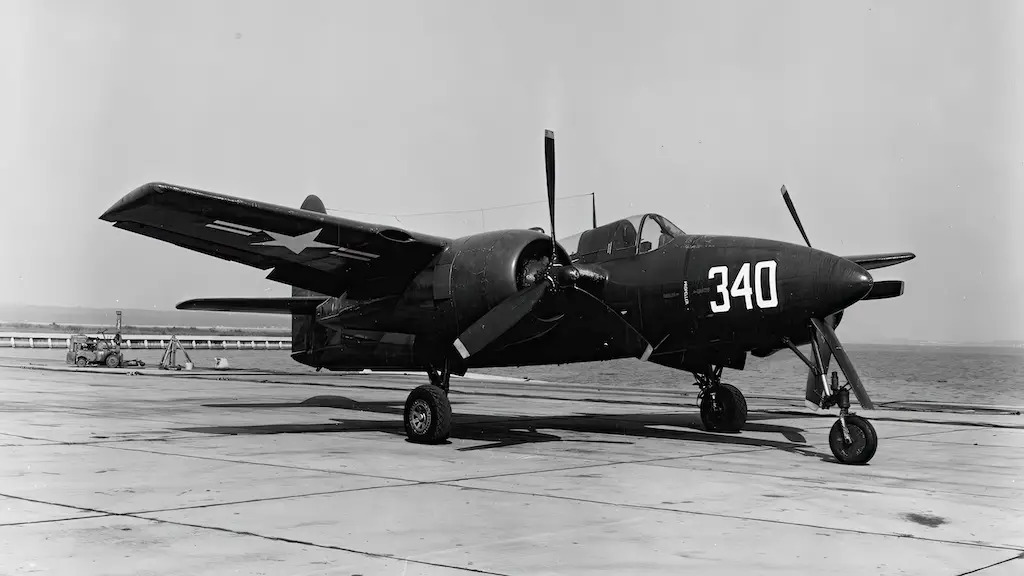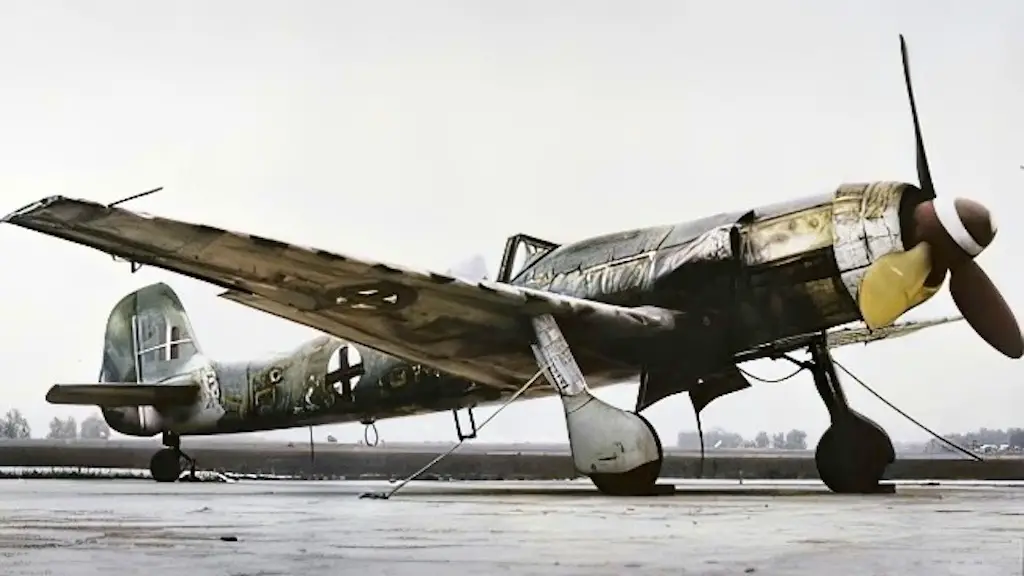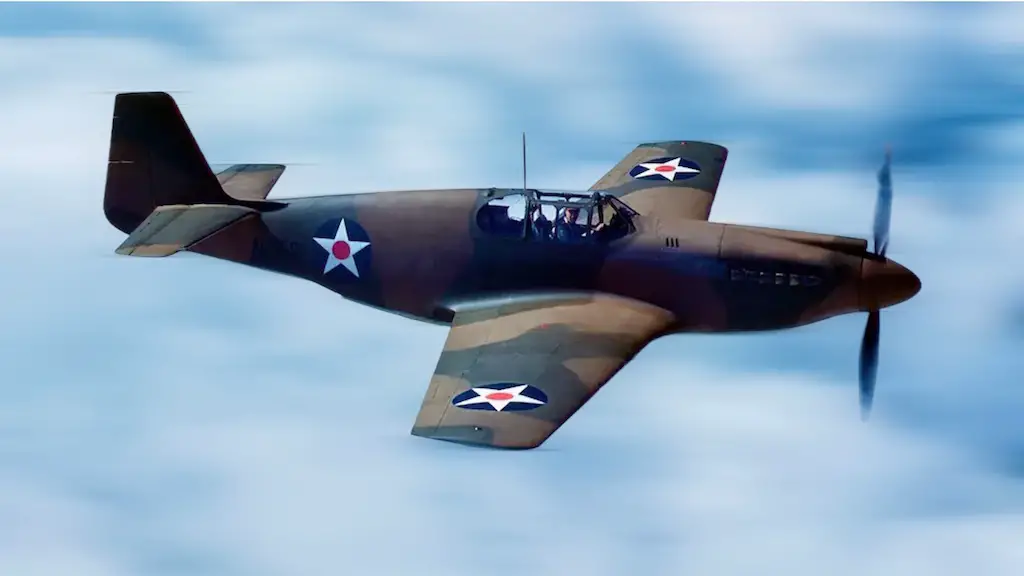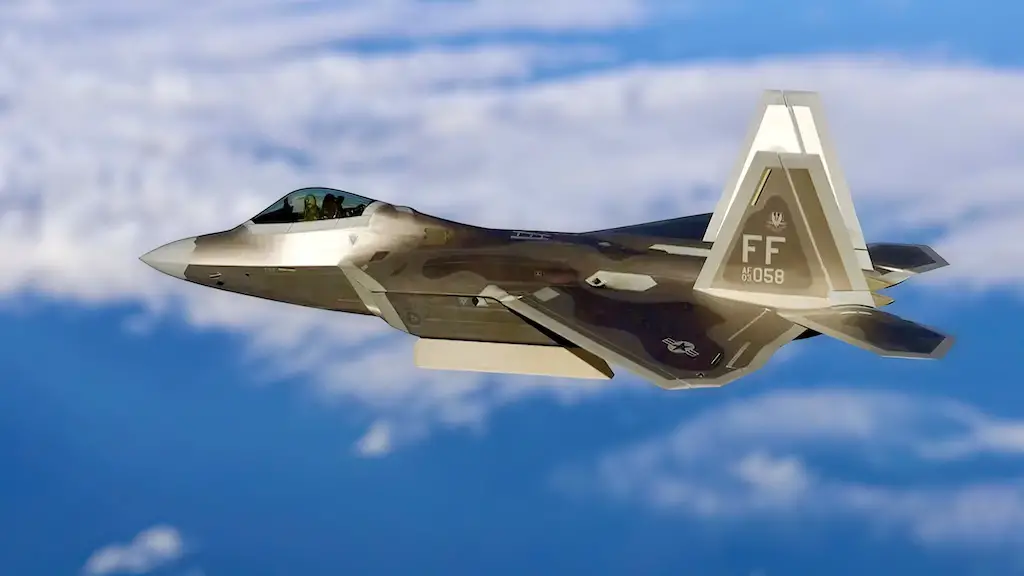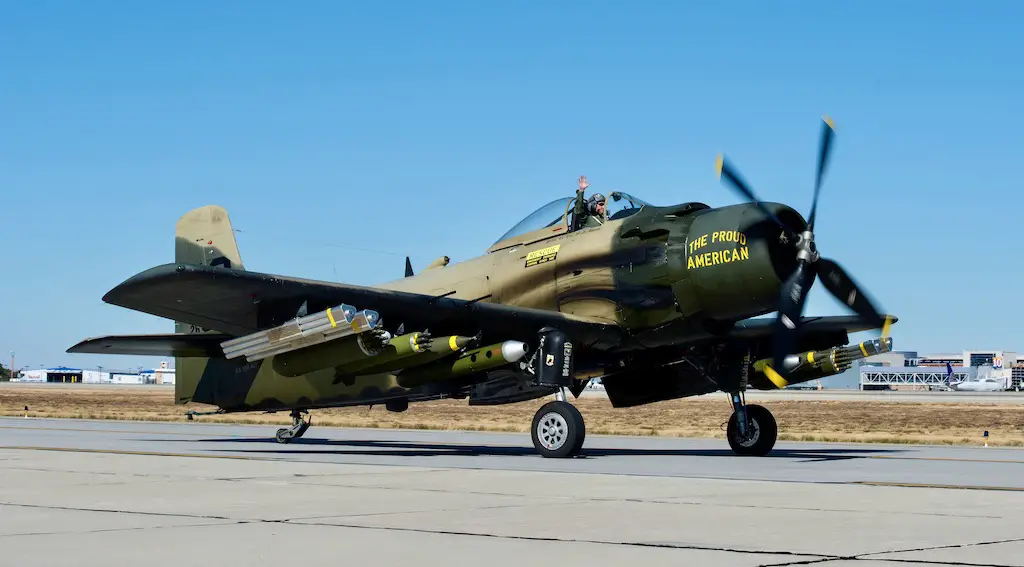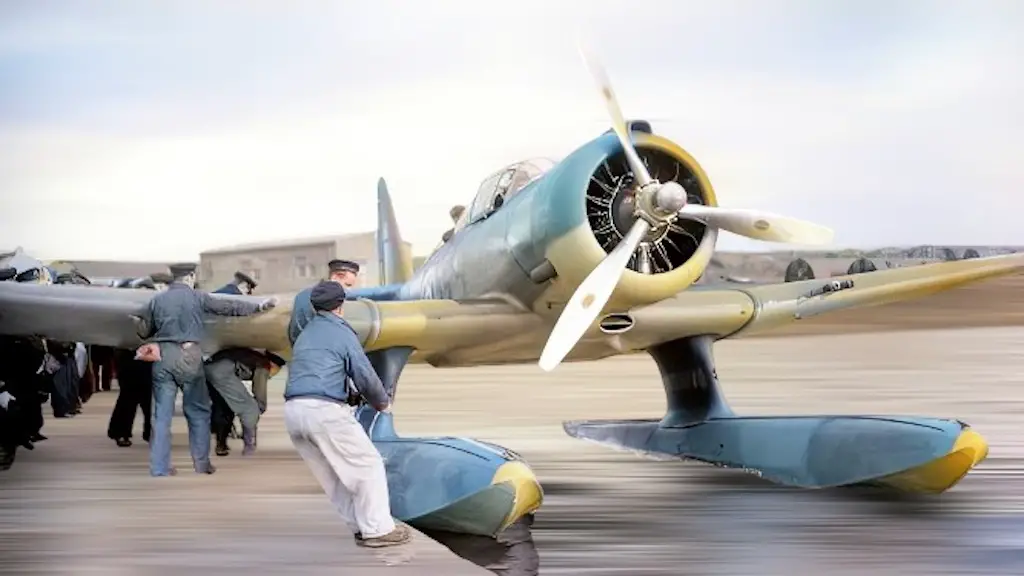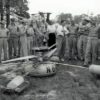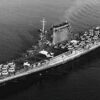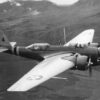Birth of a Jet Era
A blip on the radar of aviation history, the Lockheed P-80 Shooting Star came to life in the turbulent times of World War II. As America’s first successful turbojet-powered fighter aircraft, it stands as a cornerstone of jet technology.
The P-80’s journey began in 1943, when Lockheed was awarded the contract to develop a jet fighter under the guidance of chief engineer, Clarence “Kelly” Johnson. The project was called “Lulu-Belle,” and the timeframe? A mere 180 days for the prototype. But Johnson and his team were up for the challenge, unveiling the XP-80 prototype in an impressive 143 days.
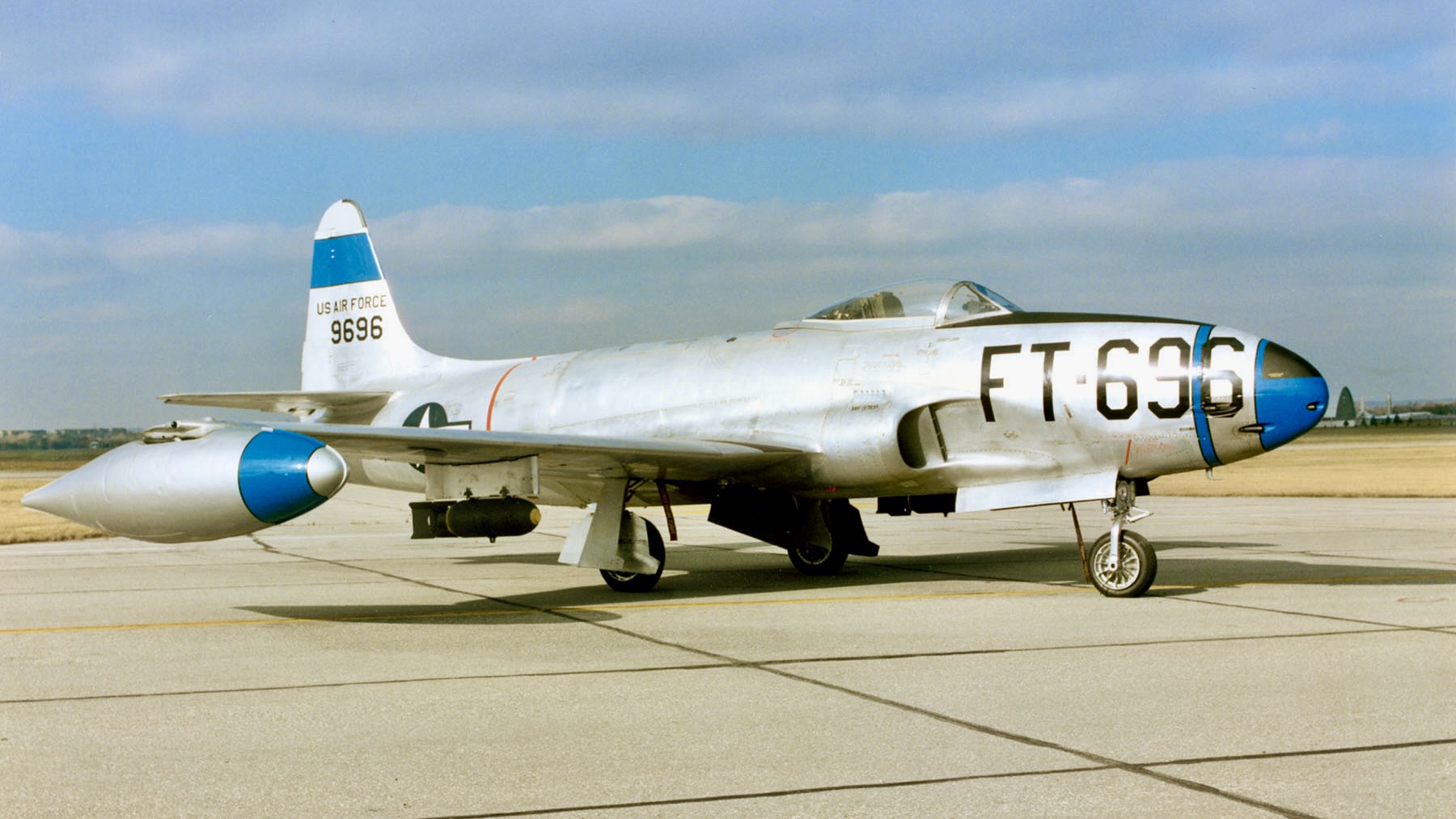
The Power of P-80’s Engine
Welcome to the nerve center of the P-80 Shooting Star – the Allison J33 turbojet engine. This dynamo played a pivotal role in propelling the aircraft to its breathtaking top speed of nearly 600 mph, a testament to engineering genius for its time.
The secret to its extraordinary prowess lay in its configuration: a single-stage centrifugal compressor paired with a single-stage axial turbine. This marriage of machinery powered the P-80’s remarkable thrust.
Delivering an impressive 4,000 pounds of force, the J33 didn’t merely power the P-80 – it launched it, transforming the Shooting Star into a lightning bolt that could tear across the sky with unparalleled momentum.
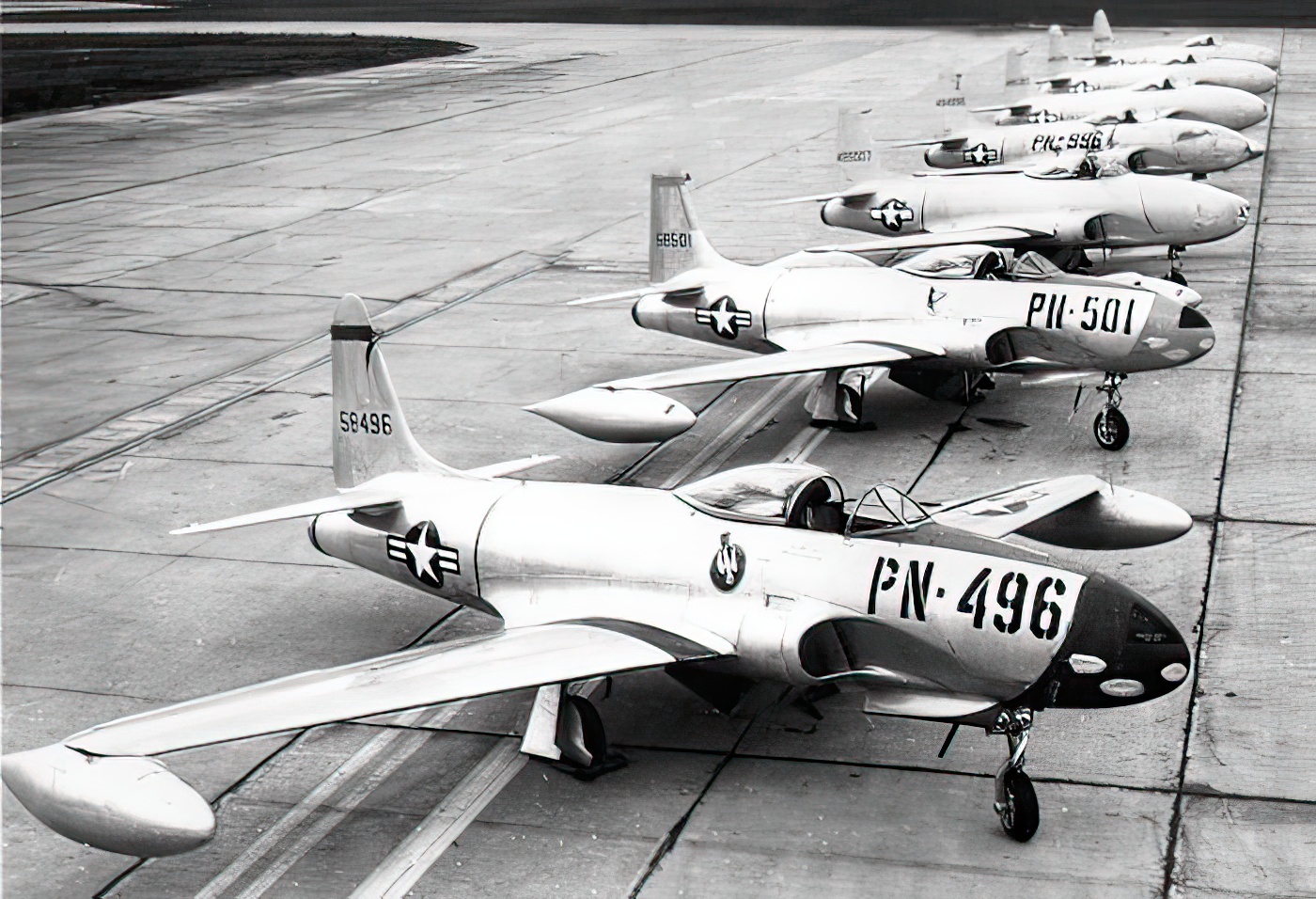
Flight Performance and Handling
In the air, the P-80 was a force to be reckoned with. Pilots lauded its steady flight characteristics and responsiveness, something uncommon in the early days of jet flight.
The Shooting Star was capable of climbing to an altitude of 45,000 feet. Its control at high speeds was superb, allowing pilots to engage in combat maneuvers with confidence. It could hit the skies hard and fast, a feature which earned it respect among allies and adversaries alike.
Limitations of Early Jet Technology
Despite its impressive performance, the P-80 was not without its drawbacks. It faced the common issues of early jet technology – most notably, high fuel consumption and engine reliability problems.
Fuel efficiency was the Achilles’ heel of early jet engines. With the P-80’s thirsty J33, pilots had to be mindful of their fuel levels, especially during prolonged engagements.
Engine reliability was another concern. While the J33 was a feat of engineering, it was not as reliable as hoped. The introduction of axial compressor technology improved reliability over time, but the early models often suffered from unexpected failures.
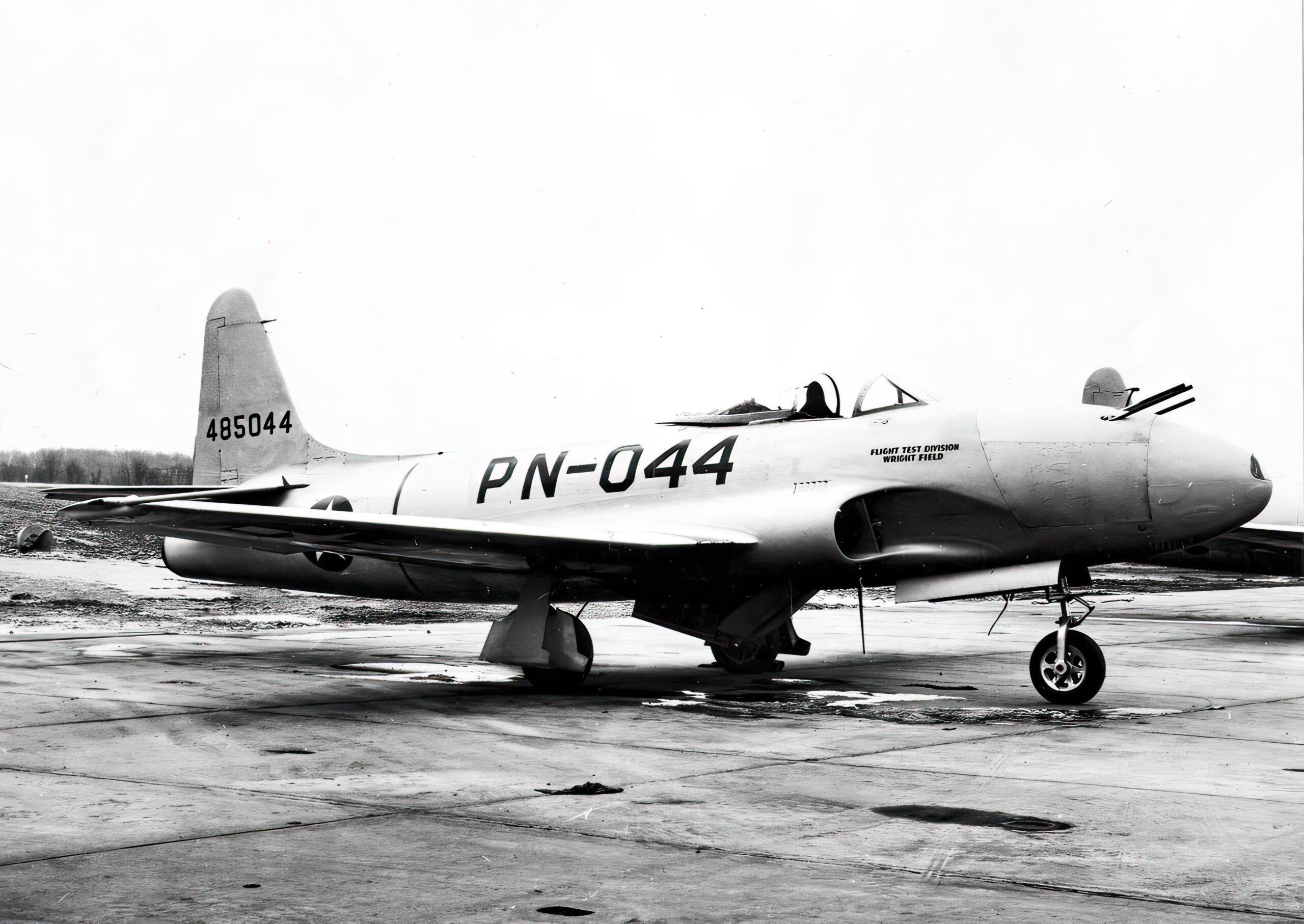
Sun Sets on the Shooting Star
While the P-80 Shooting Star’s active service chapter concluded in the mid-1950s, yielding to a new generation of advanced aircraft, its story was far from finished. Its influential legacy continued to resonate in the world of aviation.
Even in retirement, the Shooting Star kept shining. It played a significant role in training future pilots, serving as a primary jet trainer under the designation T-33. Many a jet jockey cut their teeth on these trusty trainers, keeping the P-80’s spirit alive long after its retirement.
The Lockheed P-80 Shooting Star was more than just a machine of war. It was a pioneer, a beacon guiding the path towards the jet age. Its story is one of innovation, resilience, and evolution – an emblem of a time when the world was learning to spread its wings in a new era of flight.

